|
SHANGHAI (Day 16 - part 1)
The 5-star Grand Mercure Hotel opened in 2007 and sits in the center of the Hongqiao district, deep inside Pudong (the eastern part of the city).
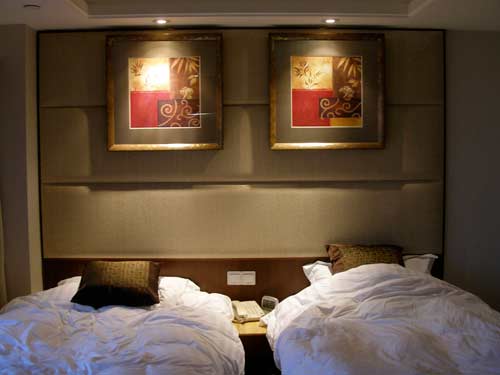
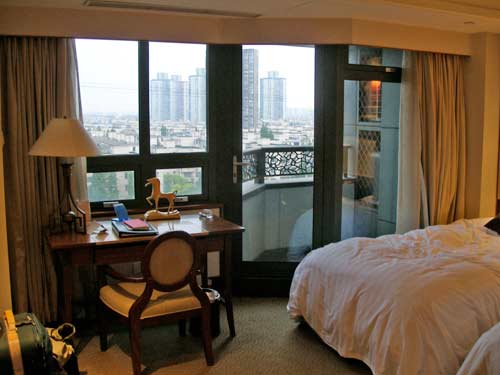
The room came with a balcony, which was locked.
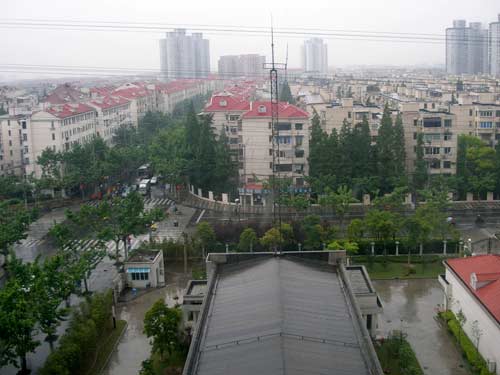
A view from the room
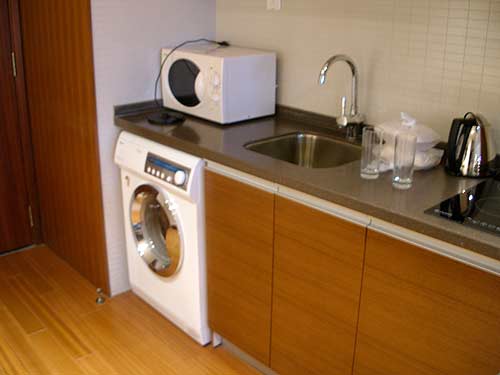
A washing machine, but no dryer.
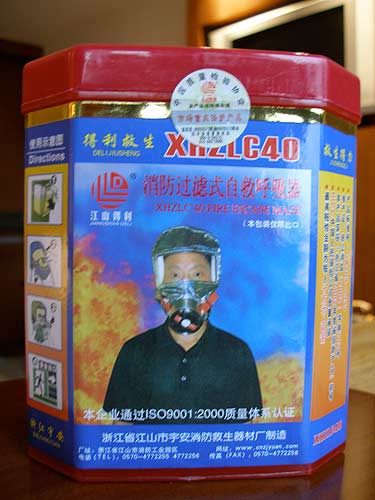
What every good hotel room needs... a gas mask

Glass elevators carry guests up through the open center of the hotel.
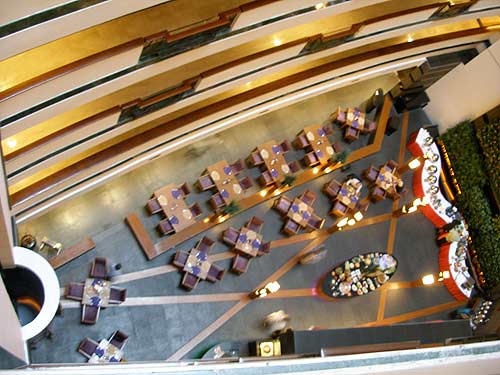
Looking straight down at the buffet breakfast area from one of the upper floors
Today was a free day. A small group of us spent the afternoon exploring Yu Yuan, the old part of town, and partaking in a tea ceremony.
Located kitty-corner from Yu Yuan Garden is Gu Cheng Park, a large-scale greenbelt project created in 2002. It consists of three immense lawns, covering over 800,000 square feet. The goal is to help people attach importance to social connections and ecology.
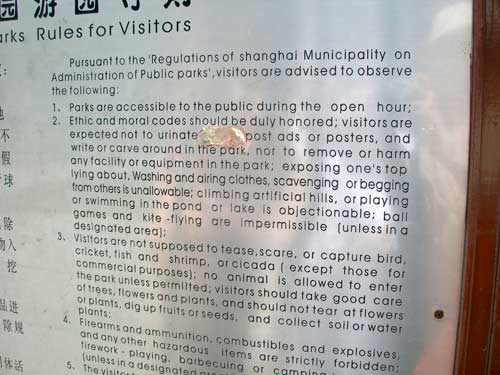
A few of the park rules... makes me REALLY wonder what was blotched out!
- Do not expose your top lying about
- Don't tease, scare or capture bird, cricket, fish and shrimp, or cicada (except those for commercial purposes)
- Discipline yourself instead of being a nuisance to others
- Activities of feudalistic and supersitious nature, gambling, and those banned under law are prohibited
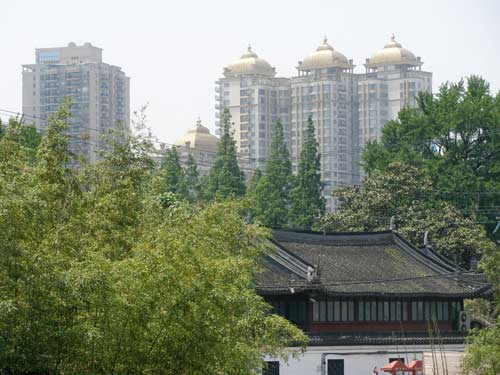
Old mingles with new
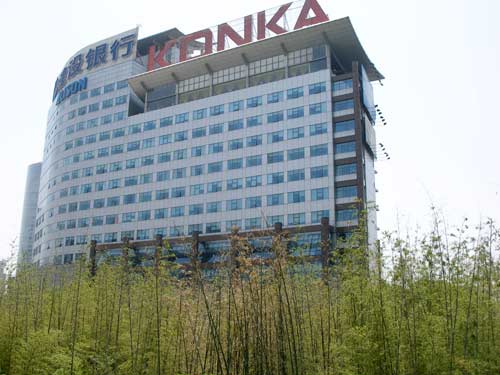
Shiny steel and glass surrounded by swaying bamboo groves
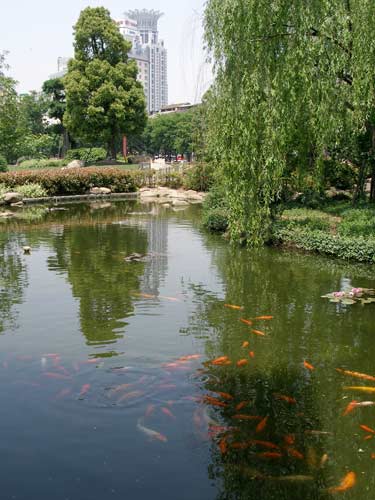
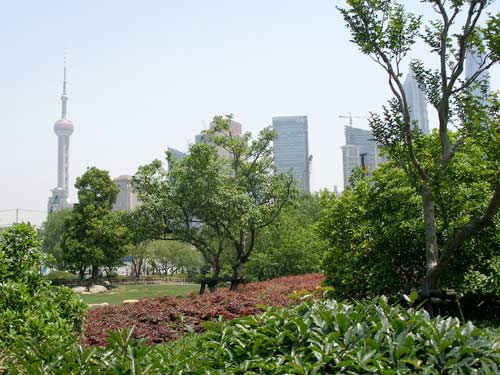
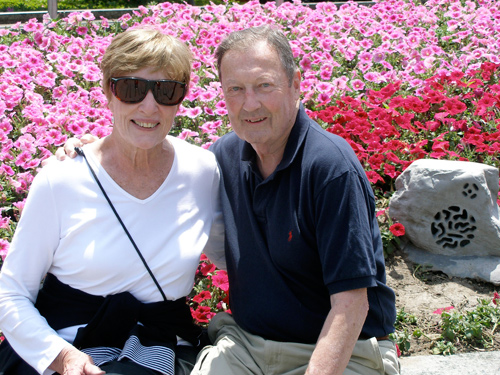
Elaine and Jack enjoy the spring flowers.
Yu Yuan garden & bazaar:
Yu Yuan Garden (meaning Happy Garden) is located in the center of the old city. It was first established in 1559 during the Ming Dynasty as a private garden by Pan Yunduan, who spent almost 20 years building it to please his parents in their old age. Today, it occupies an area of five acres and contains more than 40 attractions, including impressive halls, charming pavilions, delightful rock and tree gardens, beautiful ponds, quaint bridges and trickling streams.
The surrounding bazaar area provides shopping opportunities for traditional Chinese products, gold, and jewelry, although there was no clear line where the official garden stopped and the neighboring bazaar began.

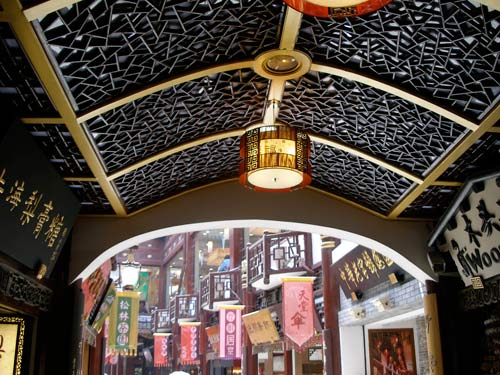
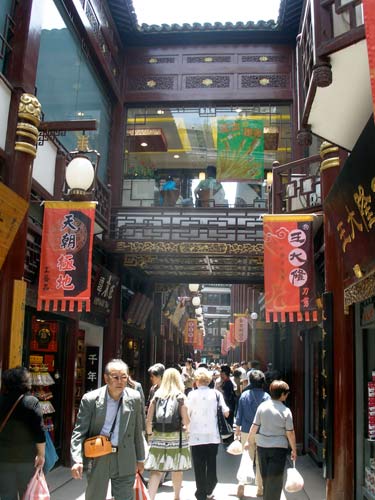

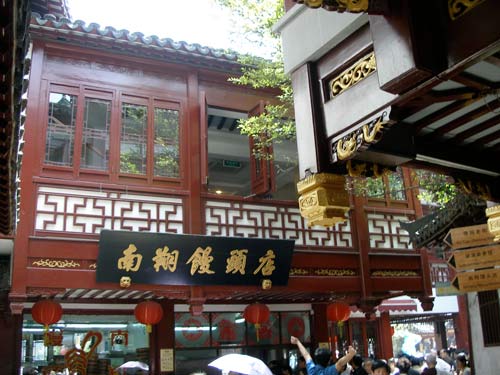
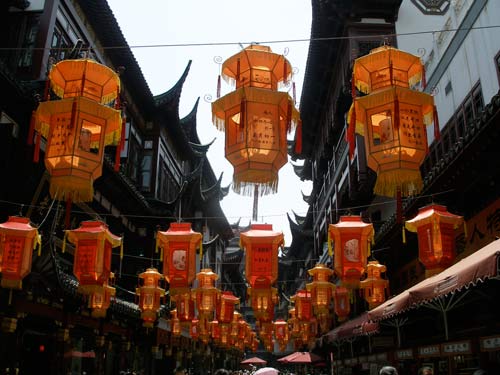
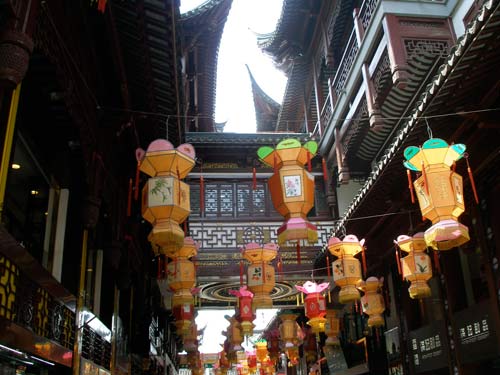
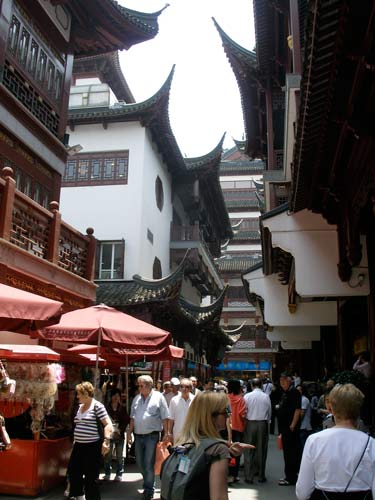

Craft stands by local artisans
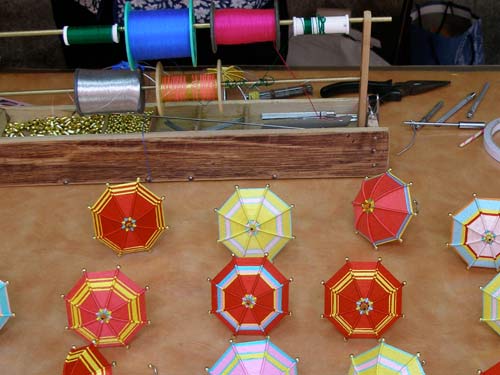
Silk umbrellas
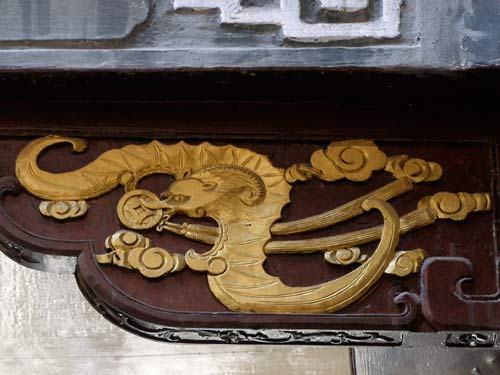
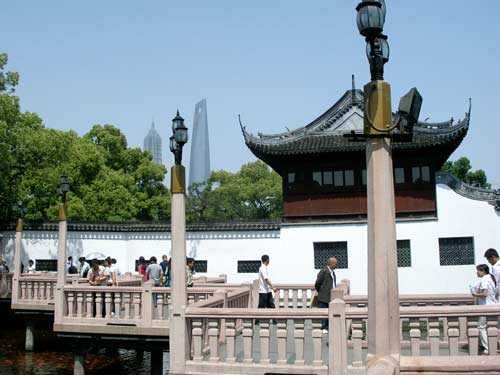
Nine-Turn Bridge (Jiuqu Bridge) zigzags through Lotus Pool
The garden is separated into different areas. The Dragon Wall wanders through this section with its undulating grey tiled ridges, meant to look like scales.

The World Financial Center coexists with Ming Dynasty architecture.
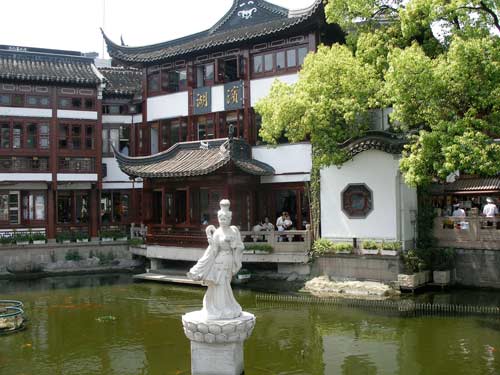
Lotus Pool
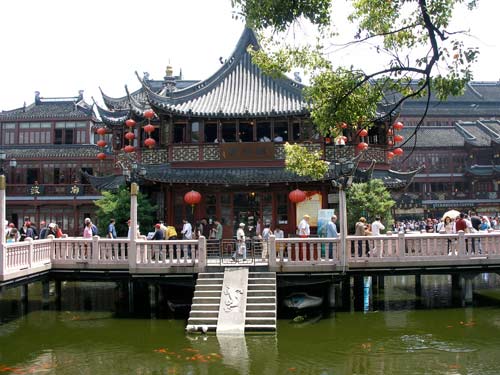
Pavilion in Lake Center is connected in both directions by Nine-Turn Bridge.
More than 400 years ago, Pan Yunduan had a square pavilion built in the pool. After the decline of Pan's family, rich merchants bought the garden and replaced it with a hexagonal one in 1784. Named Pavilion in Lake Center, it served as a venue for cloth businessmen to gather and talk. In 1855, it was converted into a tea house, making it the oldest tea house in Shanghai.
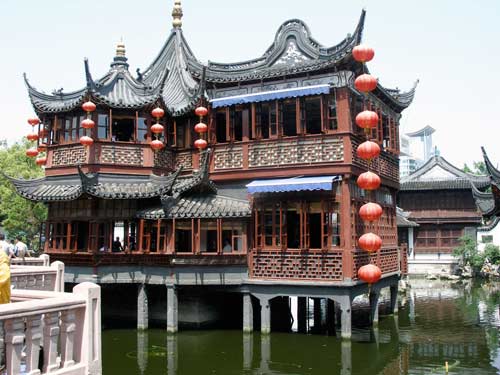
A side view
We decided to partake in a tea ceremony in the Huxington Tea House. We chose two teas: jasmine and oolong.
All teas are made from the leaves or leaf buds of the tea plant, Camellia sinensis. The only difference between white tea, green tea, oolong, and black tea is that they are processed differently to attain different levels of oxidation (exposure to air which darkens them). Two principal varieties of the tea plant are used: the larger-leafed Indian variety (responsible for Darjeeling and Assam) and the Chinese smaller-leafed variety.

The tea plant
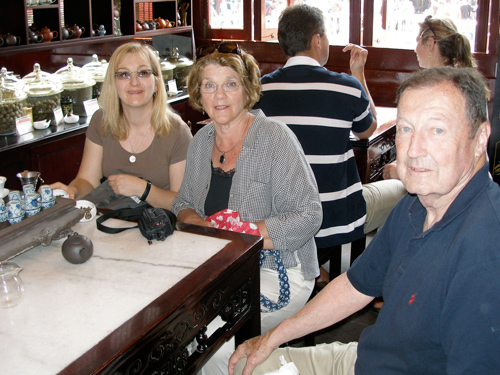
Waiting for tea
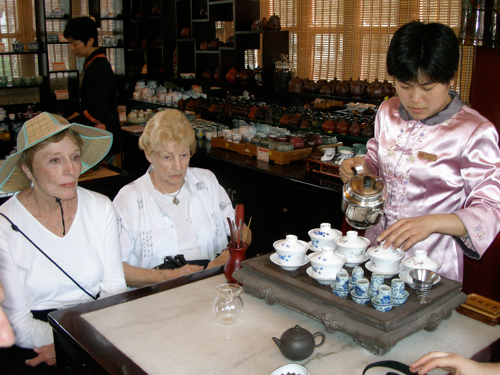
Tea ceremonies in China started before the Sui Dynasty (581 - 618), formally came into being during the Tang Dynasty, and peaked in development during the Song and Ming Dynasties.
Different cultural backgrounds have given rise to four major schools: the noble’s tea ceremony developed from the 'savoring of tea' and aims at showing off one’s wealth and rank; the scholar’s tea ceremony has its root in the 'charm of tea' and emphasizes the artistic appreciation; Zen’s tea ceremony formulates from the 'virtue of tea' and advocates cultivation of way; while the commoners’ tea ceremony originated from the 'flavor of tea' and concentrates on the enjoyment of human life.

Lychee (left) and jasmine (right)

Preparing the jasmine tea
Jasmine tea is made from green or Pouchong (very lightly oxidized) tea leaves that are scented with night-blooming jasmine flowers. The jasmine flowers are harvested during the day and stored in a cool place until night when they bloom with full fragrance. They are then layered over the tea leaves during the scenting process.
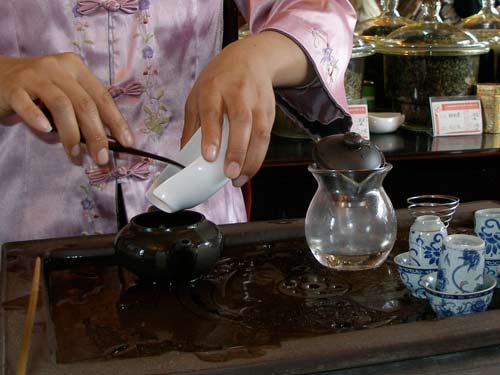
Preparing the oolong tea
Oolong (or Wu Long, meaning Black Dragon Tea) is a traditional Chinese tea that has been semi-oxidized, hence longer than green tea but not as long as black tea. It is commonly brewed to be strong, with the bitterness leaving a sweet aftertaste. Oolong tea leaves are either rolled into long curly leaves or pressed into balls (like gunpowder tea).

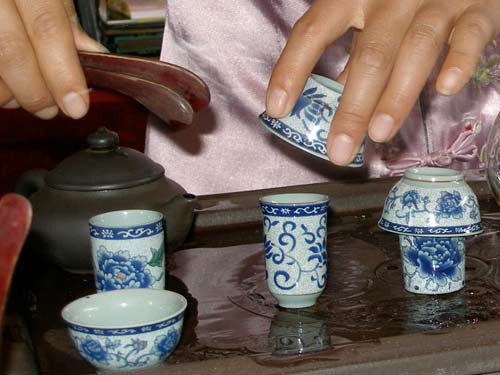
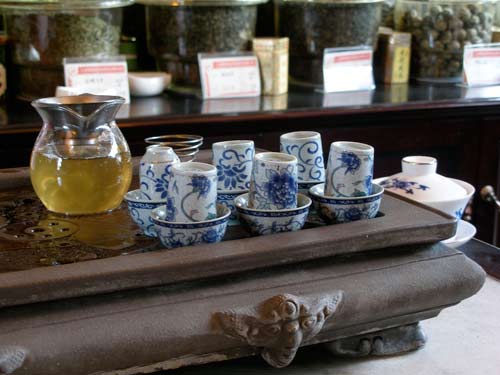
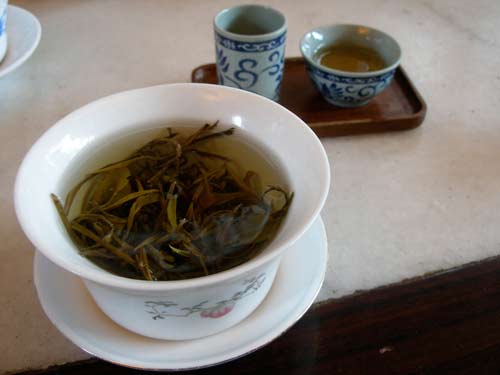
A large cup of jasmine tea and a small sampling of oolong tea
|

